The SilverStone Strider Platinum ST1000-PT & ST1200-PT PSU Review: Tenured
by E. Fylladitakis on May 4, 2018 9:00 AM EST- Posted in
- Cases/Cooling/PSUs
- PSUs
- SilverStone
- 80Plus Platinum
External Appearance
Externally, the SilverStone Strider Platinum ST1000-PT and ST1200-PT are almost identical, with the sole exception being the stickers on the left side of the units. Both units are 180 mm deep, which is relatively short for units with that kind of power output, yet certainly longer than what the ATX standard dictates. Their depth will increase the compatibility with compact cases but they will certainly not fit in every ATX-compliant case.
The chassis of both units is sprayed with a textured black paint that is slightly rough to the touch but is also smudge and scratch resistant. The sticker with the PSU's electrical specifications is on the left side of the chassis, while the right side is almost completely plain, with just small version and serial number stickers present. SilverStone's logo is engraved at the top side of the PSU. There is also a black sticker at the top, featuring the legend of the PSU's connectors, as it would not fit at the front side of the unit. A metallic badge with the company's logo also covers the center of the cooling fan.
The front side of the unit is almost completely covered by the huge number of cable connectors. With the exception of the ATX plug, the connectors feature plastic caps. The CPU and PCIe do not share the same connectors, with the former being blue and the latter black. These connectors look the same but they are keyed so, for example, the PCIe cables will not fit in the CPU connectors. The rear of the PSUs is uninteresting, with only the AC cable receptacle and a small switch to be found.
Internal Design
Both the ST1000-PT and the ST1200-PT are using the same cooling fan, which is the customized flow version of the HA1425H12B-Z made by Hong Hua. The fancy-looking grill is not just for show, as it is supposed to focus airflow directly in front of the fan rather than allowing it to chaotically spread to all directions. It sports a dual ball bearing engine. The fan has a maximum rotational speed of about 2400 RPM.
The ST1000-PT and ST1200-PT are not identical only on the outside but on the inside as well. Both units are based on the exact same platform and even many of their components are the same. The only difference between the two units is that the 1200 Watts version has some higher-spec components that allow it to reach a higher power output.
The OEM behind the creation of these two units is Enhance, a company that SilverStone entrusts most of their PSUs. The platform design is relatively simple and clean, as Enhance is focused on quality and stability more than anything else.
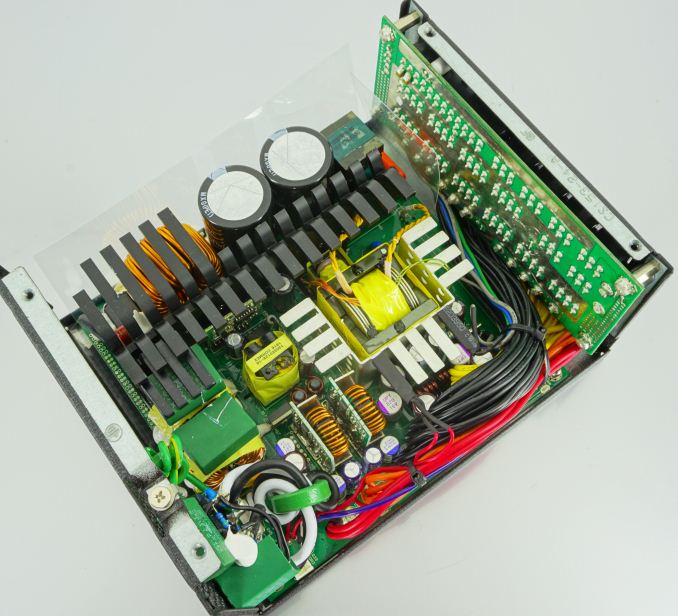
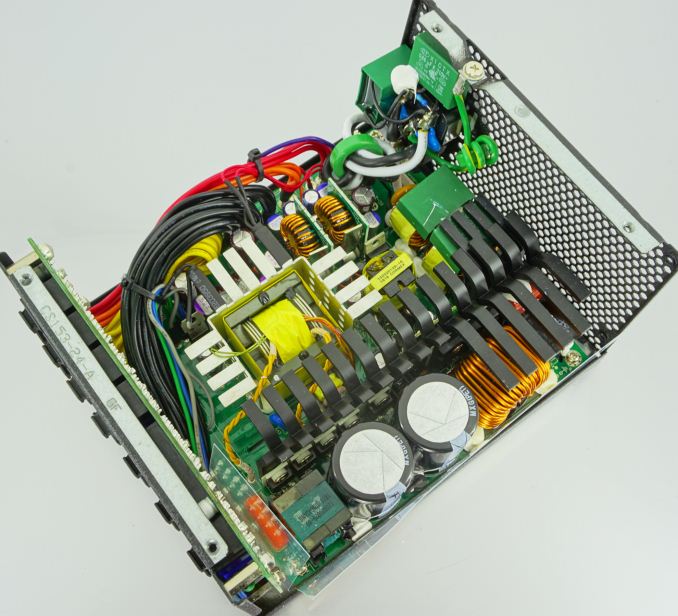
The SilverStone Strider Platinum ST1000-PT (up) and ST1200-PT (down)
The filtering stage of both units is identical, consisting of four Y capacitors, four X capacitors and two filtering inductors. Surges are suppressed by a MOV and inrush current is limited via a NTC thermistor/relay configuration. Moving forward, we find two input rectifier bridges sandwiched together on a small heatsink that can be found beneath the main heatsink of the PSU.
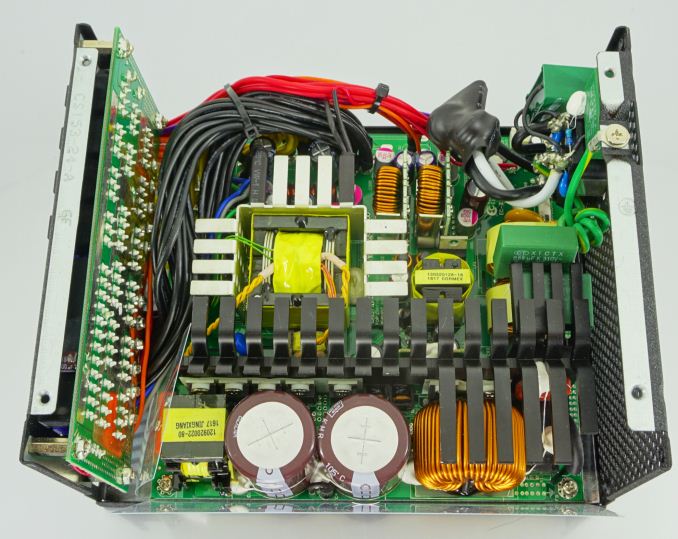

The SilverStone Strider Platinum ST1000-PT (left) and ST1200-PT (right)
The main heatsink of the PSU is physically large but has thick and short fins, resulting to a relatively small heat dissipation surface. It holds the active components of the PFC and also the MOSFETs of the primary inversion stage. A large filtering PFC choke can be seen beneath its longer fins, followed by two APFC capacitors. The PFC capacitors differ between the two models, with two Nippon Chemi-Con 450V/540μF in the ST1000-PT and two Rubycon 420V/390μF in the ST1200-PT.

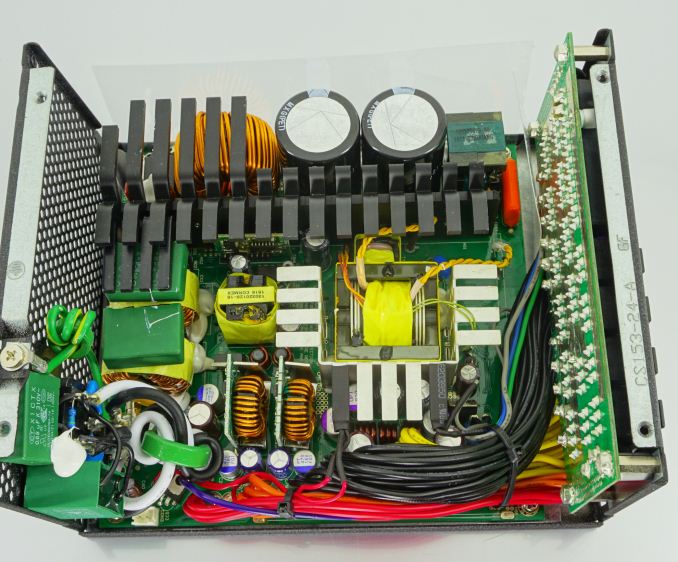
The SilverStone Strider Platinum ST1000-PT (left) and ST1200-PT (right)
The primary inversion circuit consist of four MOSFETs that form a LLC resonant full-bridge converter design. A single 12V line is generated at the secondary side of the PSUs by a massive rectifier configuration formed by twelve MOSFETs. The minor 3.3V/5V lines are generated via DC-to-DC converters, which can be seen on their own small PCBs. The filtering capacitors are a chaos, with both units using a mix of electrolytic capacitors from Nippon Chemi-Con, Rubycon, and Unicon, as well as solid-state capacitors from Nippon Chemi-Con, Nichicon, and Unicon.


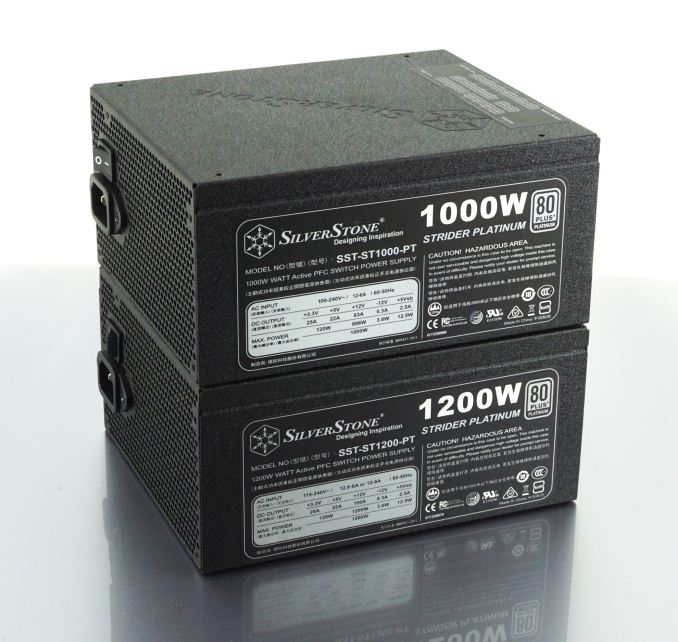
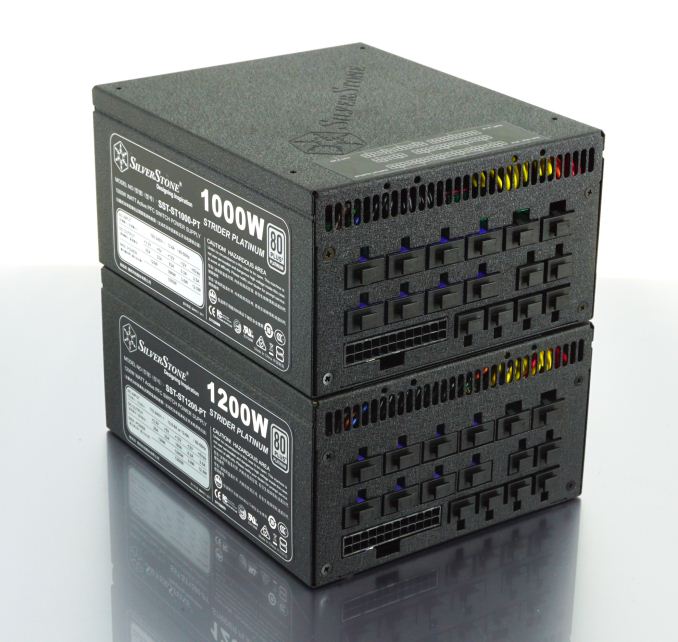
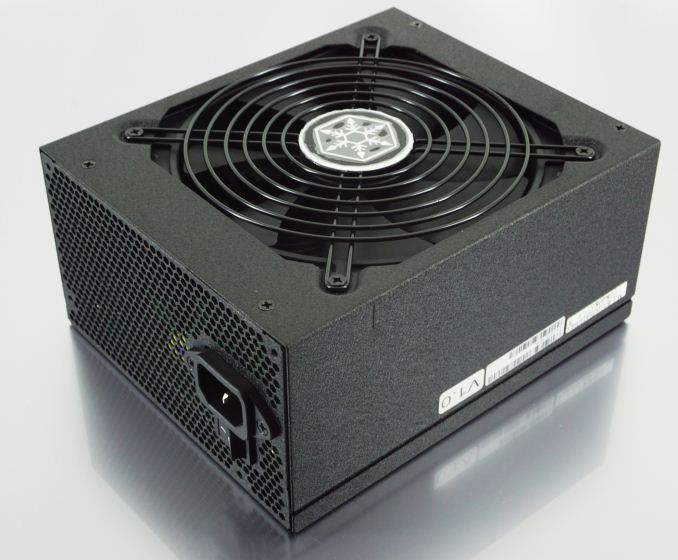
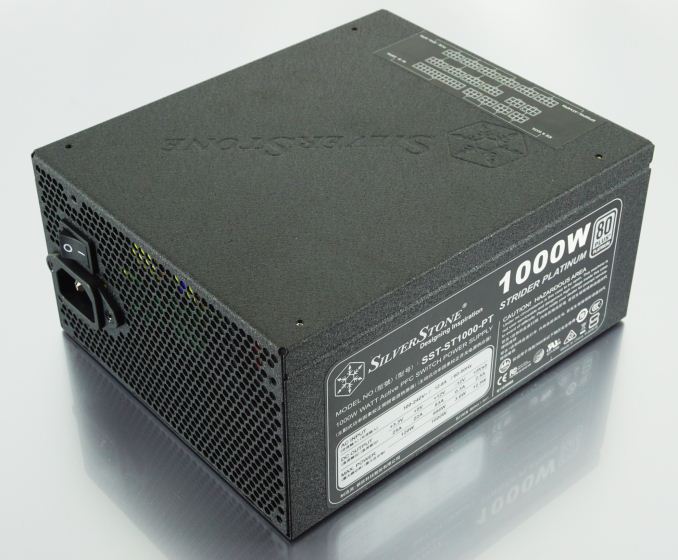
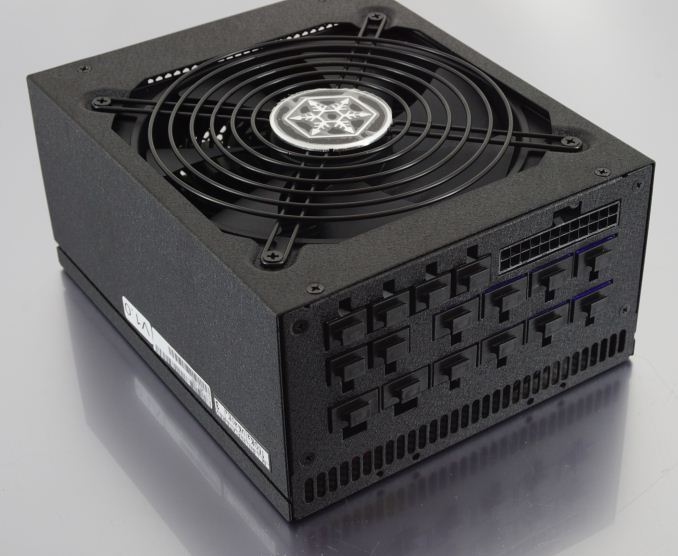
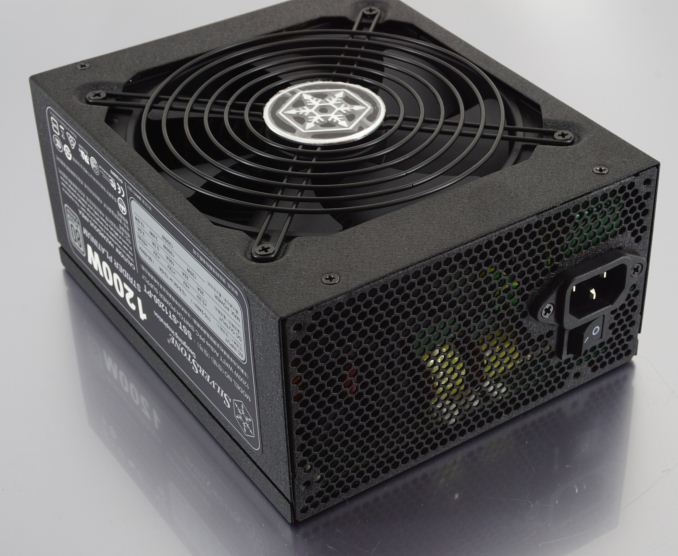
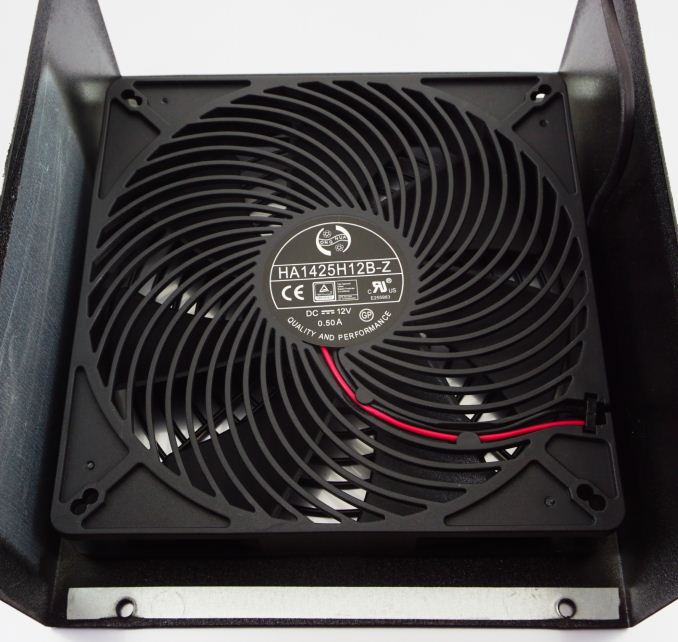
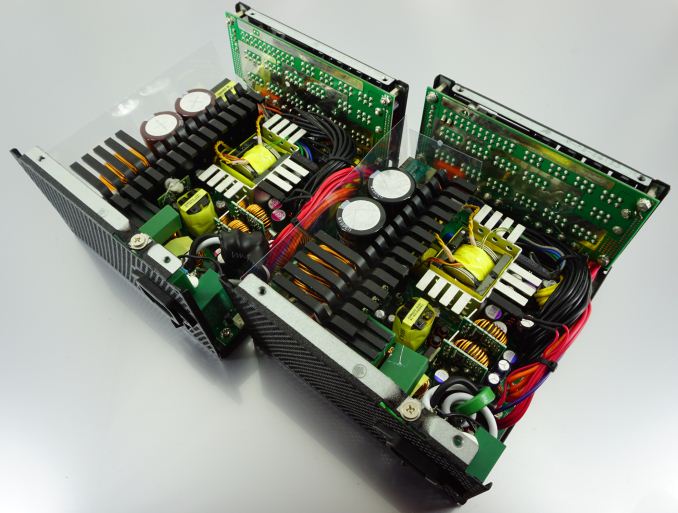
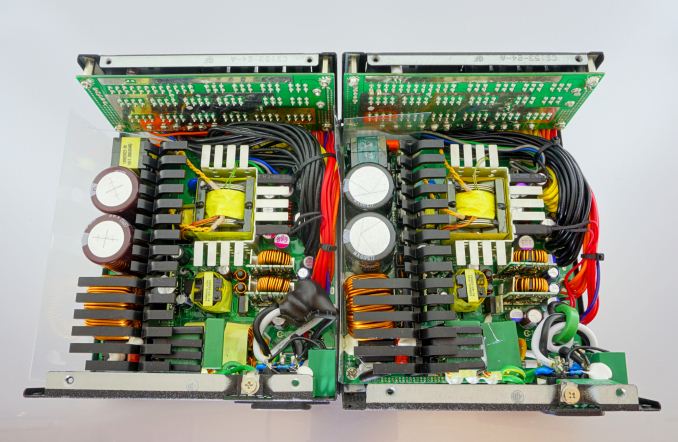
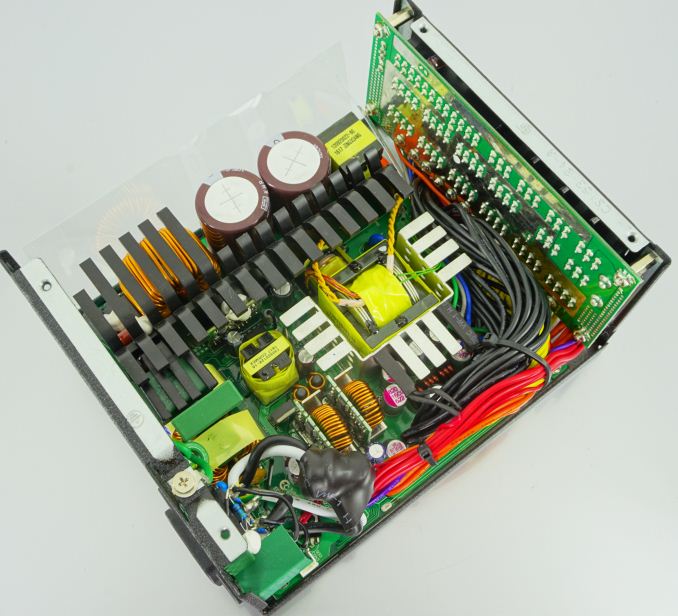
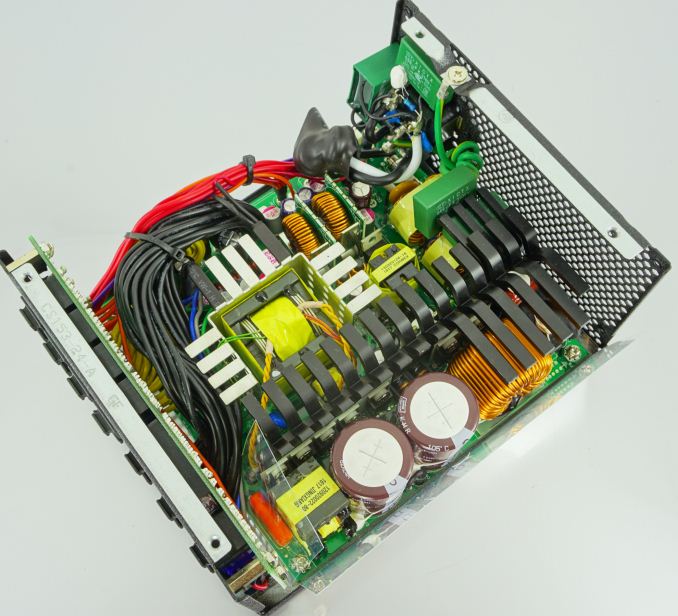








21 Comments
View All Comments
Samus - Saturday, May 5, 2018 - link
I'm still rocking an 11 year old PCP&C 750 Quad. 80 Plus something or other rating. I think it was rated 80 Plus before there were even sub-categories of 80 Plus.notashill - Tuesday, May 8, 2018 - link
I had the same PSU but it died (for the second time, first was under warranty and it was repaired not replaced) about a year and a half ago. Still not a bad service life.DanNeely - Tuesday, May 8, 2018 - link
That was a very good supply in its day, and is probably fine to keep using in whatever you've got it in for as long as you keep it. I'd be hesitant to install it in a new built system today though.I can't find any reviews that did a cross load test on it; but from its age it's almost certainly a design with separate 12V and 3.3/5V segments whose voltages get out of spec if you put a huge load one of them and barely anything on the second (aka cross load).
That's an issue because modern systems use 12V almost exclusively and put very little load on the 3.3/5V rail (PCIe cards can draw up to 10W@3.3V, a few years ago AMD was to get the most power out of the slot, nvidia was limiting itself to the 65W available at 12V; USB draws 5V for most uses, 2.5/3.5" drives might tap 5V, but almost never touch the 3.3V line because of molex to sata adapters that leave it unpowered); which puts older PSUs into a cross load situation if you're running GPUs and load the 12V rail heavily. Newer designs avoided this by going pure 12V at the AC-DC conversion step and then making lower voltages via DC-DC conversion.
Achaios - Friday, May 4, 2018 - link
"considering that the ST1000-PT was struggling to reach the 80Plus Platinum certification limits"@E.F: You should know, since you are a PSU specialist, that Silverstone has got a history of marketing units made by Enhance, which fail to meet the Certification limits or barely make it.
Case in point, my own Silverstone Strider Gold 850W. This unit fails to meet the Gold Certification by 1-2 %. This is a year 2011 PSU and the reviewer who first noted the fact was Johnny Guru.
After, what, 7 years Silverstone learned nothing from the negative publicity and they just keep doing the same thing. Ofc such data does not concern the average buyer out there who buy PSU's b/c of attractive packaging or good price, just us enthusiasts.
Silverstone sells good, solid units, just not without flaws and not the best-of-the-best. I'd label them Tier 2 or Tier 3.
stanleyipkiss - Friday, May 4, 2018 - link
Who is Tier 1 then?praeses - Friday, May 4, 2018 - link
Seasonicpraeses - Friday, May 4, 2018 - link
... and probably FSP Group after them.Fallen Kell - Friday, May 4, 2018 - link
Tier 1 is Seasonic, FSP, Corsair, and Enermax who design (and in the case of Enermax build) their own power supplies. Many of the other ones simply use an OEM design, possibly with a few modifications, but in many cases it is simply an OEM with specific paint/color scheme, or specific cables, etc..praeses - Friday, May 4, 2018 - link
Corsair is usually Seasonic or FSP. I'm not sure that I would put Enermax in the same tier as Seasonic/FSP.piroroadkill - Monday, May 7, 2018 - link
As far as I recall, Corsair uses Great Wall for a good number of their mid-range units, and Flextronics at the very high end.